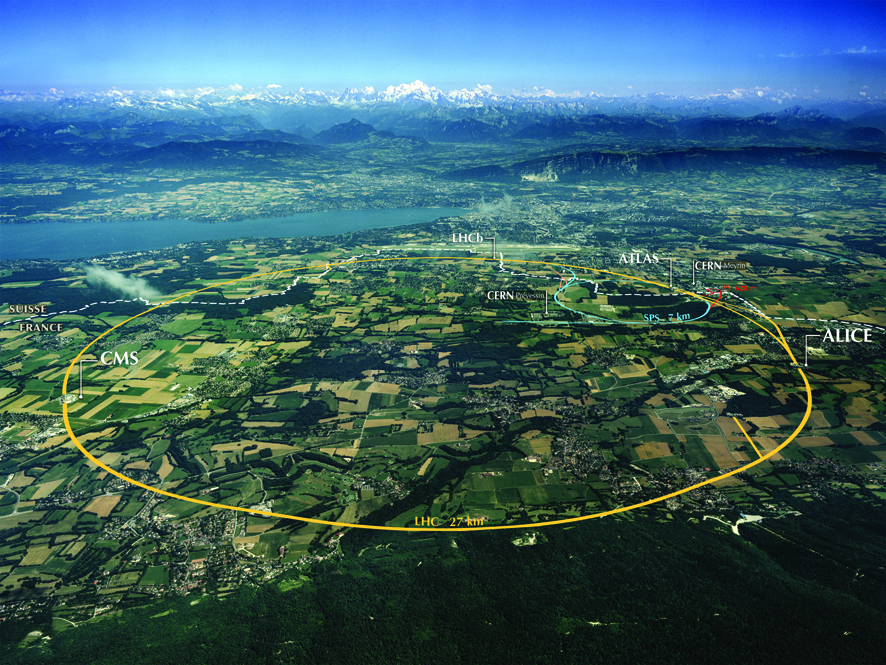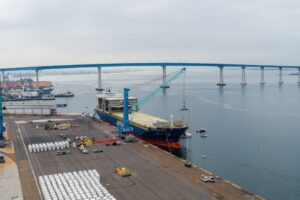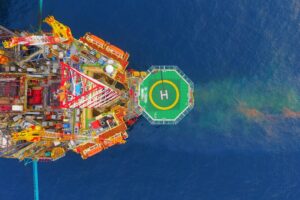After two years of maintenance and upgrading, the Large Hadron Collider at CERN has been started up again in April 2015. Considering the media attention that the LHC received when it was first switched on, this restart has been met with much less fear and contention and more positivity and excitement. However, CERN remains a mystery to many people outside of the scientific arena. I was fortunate enough to speak with one of the most prominent scientific figures of our time, Director of Accelerators and Technology, Frédérick Bordry, and it is clear that the excitement felt in the scientific community is palatable.
CERN
For those people outside of the scientific community, many believe that the LHC (Large Hadron Collider), which was switched on in 2013 with the aim of establishing the existence of the Higgs Boson, a until-then-unproven theoretical particle that was responsible for giving all objects in the universe mass via the boson field, was actually the same thing as CERN. However the LHC is merely one of many scientific achievements that CERN has been responsible for.
The success of this machine was a moment where, for the layman, reality and science fiction clashed, which made many people assume that CERN was the secret lair of some super villain from a comic book. The truth however was and is far more amazing; CERN is nothing less than the seat of pure scientific discovery, free of political influence and gender bias. A place where intelligence, scientific understanding and the quenching of our insatiable curiosity is prioritised.
A NEW DAWN AFTER WORLD WAR 2
In many ways CERN originated from the pursuit of truth against all odds. By the end of the Second World War, on the 9th December 1949, European science was no longer world-class and following the example of international organisations, a handful of visionary scientists imagined creating a European atomic physics laboratory with the aim of understanding nuclear physics and how it could benefit mankind. Amongst these pioneers were such people as Raoul Dautry, Pierre Auger and Lew Kowarski in France, Edoardo Amaldi in Italy and Niels Bohr in Denmark.
It was their belief that such a laboratory would not only unite European scientists, but also allow them to share the increasing costs of nuclear physics facilities in a period still reeling from the economic impact of World War II.
In the scientific community, the idea was well received from global locations. French physicist Louis De Broglie applied his first official proposal for the creation of a European laboratory at the European Cultural Conference, which opened in Lausanne on 9th December 1949. A further push for the idea came at the fifth UNESCO General Conference, which was held in Florence in June 1950, where the renowned American physicist and Nobel laureate Isidor Rabi tabled a resolution authorizing UNESCO to “assist and encourage the formation of regional research laboratories in order to increase international scientific collaboration…”
A year later in Paris, December 1951, at an intergovernmental meeting of UNESCO, the first resolution concerning the establishment of a European Council for Nuclear Research was adopted. Once done, it took two months before 11 countries signed an agreement establishing the provisional council and the acronym CERN was born.
Mankind had made a major leap forward in its quest for scientific understanding.
THE LARGE HADRON COLLIDER
Today, the Large Hadron Collider is the world’s largest and most powerful particle collider, representing the largest and most complex experimental facility ever built and the largest single machine in the world. Bordry is in charge of the operations of existing accelerators and technology of the 27 kilometre machine which includes the injectors that create the all-important beams, “I am also responsible for the Booster PS3 accelerators and the research and development which keeps the technology at the state of the art level which includes preparing for the next big accelerator.”
Constructed at CERN between 1998 and 2008 in collaboration with over 10,000 scientists and engineers from over 100 countries, as well as hundreds of universities and laboratories, it lies in a tunnel 27 kilometres (17 mi) in circumference, as deep as 175 metres (574 ft) beneath the Franco-Swiss border near Geneva, Switzerland.
Its first research run took place from 30 March 2010 to 13 February 2013 at an initial energy of 3.5 teraelectronvolts (TeV) per beam (7 TeV total), almost four times more than the previous world record for a collider rising to 4 TeV per beam (8 TeV total) from 2012. On 13 February 2013 the LHC’s first run officially ended and it was shut down for planned upgrades. ‘Test’ collisions restarted in the upgraded collider on 5 April 2015 reaching 6.5 TeV per beam on 20 May 2015.
It contains seven detectors, each designed for certain kinds of research. The proton-proton collision is the primary operation method, but the LHC has also collided protons with lead nuclei for two months in 2013 and used lead–lead collisions for about one month each in 2010, 2011 and 2013 for other investigations.
Furthermore, another record maker was The LHC’s computing grid. Data from collisions was anticipated to be produced at an unprecedented rate of tens of petabytes per year, a major challenge at the time, to be analysed by a grid-based computer network infrastructure connecting 140 computing centres in 35 countries – by 2012 the Worldwide LHC Computing Grid was also the world’s largest distributed computing grid, comprising over 170 computing facilities in a worldwide network across 36 countries
The LHC’s aim is to allow physicists to test the predictions of different theories of particle physics, high-energy physics, “It is due to the LHC that we were able to prove the existence of the Higgs-Boson particle, the particle responsible for giving all things their mass,” Bordry says, “However at the time we were making use of only 1% of the capable strength of the LHC so there is a great deal more to discover.”
Discovery is only one part of the job. With a team of 1300 staff comprised of the brightest physicists, engineers and researchers spread over several departments, Bordry is responsible for what he calls the Three Pillars, “Operations, Projects and Study,” and this makes his role and the role of his staff some of the most important in history, “We possess a great deal of talent,” he says, “But you also have to have a lot of patience. Scientific discovery takes a lot of patience.”
The LHC will run until 2018, then be shut down for another two months for essential maintenance and repair to the 27km machine. There is little room for error as he explains, they are dealing with particles so small and difficult to find that for a long time they existed only in science fiction. Therefor the machine has to be carefully and precisely maintained. The Higgs Boson for example was theorized fifty years ago and only recently was there a machine capable of discovering it.
After the overall, the LHC will be operational again in 2018 and will run through to 2021 at different heights of energy. The difference, is that whereas previously they knew what they were looking for, ie. The illusive Higgs Boson, now they are pioneers into an unfamiliar field.
As if the LHC was a torch light into the darkest regions of the universe, it is Bordry’s hope that the LHC could help prove the existence of Dark Matter.
“Dark matter was theorised by Einstein,” he reveals, “Although he dismissed his own idea at the time, scientists have found that it could, theoretically make up 75% of the known universe and be responsible for the acceleration of its borders.”
Thanks to the LHC scientists have never been closer, or rather, have never had a machine capable of helping them determine the existence of such particles but the discovery itself would be a major step for mankind into the understanding of the universe and the physical laws that understand it.
NOT AT ALL EASY
Due to CERN pioneering endeavours into the realms of scientific discovery, they are constantly pushing into unfamiliar territory. This is one of the last truly unexplored frontiers as they seek to understand the universe at a fundamental level and every discovery they make, every answer they find brings about more questions.
So every provision must be made to ensure that the major experiments are conducted safely, which was one of the reasons why the LHC has been down for two years while repairs and upgrades were carried out on this incredible machine.
On the 7th April 2015 at 10.41am, a proton beam was back in the 27-kilometer ring, followed at 12.27pm by a second beam rotating in the opposite direction. These beams circulated at their injection energy of 450 GeV. Over the coming days, operators will check all systems before increasing energy of the beams.
CERN Director General Rolf Heuer said, “Operating accelerators for the benefit of the physics community is what CERN’s here for. Today, CERN’s heart beats once more to the rhythm of the LHC.”
Paul Collier, Head of CERN’s Beam Department said, “The return of beams to the LHC rewards a lot of intense, hard work from many teams of people and it’s very satisfying for our operators to be back in the driver’s seat, with what’s effectively a new accelerator to bring on-stream, carefully, step by step.”
LHC beam energies are colossal and the electric currents are extremely high, up to 12,000 Amperes, meaning that superconducting cables have to be used. Superconductivity is a low-temperature phenomenon, so the coils have to be kept very cold, just 1.9 degrees above absolute zero to be precise, or -271°C. Even a tiny amount of energy released into the magnet for any reason can warm the coils up, stopping them from superconducting. When this happens, the current has to be safely extracted in a very short time. This is called a quench, and just one millijoule – the energy deposited by a 1-centime euro coin falling from 5 cm – is enough to provoke one. Magnet protection in the event of quenches is a crucial part of the design of the LHC’s magnetic system.
When a new superconducting magnet is qualified for use, it needs to be trained. That involves steadily increasing the current until the magnet quenches, then starting again. At first, the quenches may occur at relatively low current, but over time, as the components of the magnet settle in, the current increases until the magnet can be operated routinely at its nominal current. If a new training cycle is started after an extended period during which the magnet is warm, the magnet usually restarts training at a value that is higher than first quench in the first training cycle but lower than the maximum previously reached. In other words, the magnet’s ‘memory’ is usually less than 100%.
Before the LHC started operation, all of its magnets were trained up to a current equivalent of collision energy of over 14 TeV. Tests with individual magnets, along with hardware commissioning tests in 2008, have shown that for some dipole magnets the memory is slightly lower than expected, demanding a larger number of quenches to reach a nominal field. However, retraining these magnets to 13 TeV should require only a short period of time, whereas retraining to 14 TeV would take longer, taking time away from physics research. That’s why the best way to get to new results quickly, at an energy considerably higher than ever achieved before, is to start operation at 13 TeV. A decision regarding when to go higher will be taken at a later date in the LHC’s second run.
The repairs and upgrades have presented a mammoth task. Some 10,000 electrical interconnections between the magnets were consolidated. Magnet protection systems were added, while cryogenics, vacuums and electronics were improved and strengthened. Furthermore, the beams were set up in such a way that they will produce more collisions by bunching protons closer together, with the time separating bunches being reduced from 50 nanoseconds to 25 nanoseconds.
“After two years of effort, the LHC is in great shape,” Bordry says, “but the most important step is still to come when we increase the energy of the beams to new record levels.”
The Brout-Englert-Higgs mechanism, dark matter, antimatter and quark-gluon plasma are all on the menu for LHC season two. After the discovery of the Higgs boson in 2012 by the ATLAS and CMS collaborations, physicists will be putting the standard model of particle physics through its most stringent test yet, searching for new physics beyond this well-established theory describing particles and their interactions
Now operational, the LHC is entering its second season of operation. Thanks to the work done in the last two years, it will operate at unprecedented energy which is expected to be almost double that of season one at 6.5 TeV per beam. With 13 TeV proton-proton collisions expected before summer, the LHC experiments will soon be once again exploring uncharted territory.
“You discover one thing and it opens dozens of doors that need to be investigated; you find the answer to one question and it prompts another,” Bordry says, adding, “It is how we stay out of the dark.”









